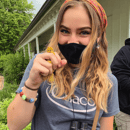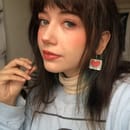Winter is a time when a plushy, insulated bed is highly coveted. People browse brands of pillows and duvets to find the perfect ones for them. One product many of you probably have is down feather bedding. While scrolling through Sleep Advisor, down feather pillows are a highly marketed bedding. Pros that the website gives about down feather pillows include “Great Aesthetics,” “Plushy Feel,” and “Durability.” The website also highlights cons that include “a lower loft,” “it loses shape,” and “they are expensive.” However, are these the only cons that come with purchasing down feather materials? The answer is no.
Many people do not consider where their products came from before they purchased it. While there are some products with faux feathers more and more people are turning to real down-feathers. These are a highly marketed material, so let’s take a deeper look at this dangerous industry.
What are down feathers?
According to Dr. Becker from Healthy Pets, “’Down’ is the soft layer of feathers closest to a bird’s body and is found primarily in the chest region.” Down feathers keep waterfowl insulated and helps them float in water. The birds primarily used for their down feathers are ducks and geese. According to Gentle Word, “It takes the down from approximately 75 + birds to make an average comforter.”
What is live-plucking?
Dr. Becker states that the three ways that down feathers are collected is the following:
-
A by-product of birds killed for the food industry
-
Through ‘harvesting’ of the down feathers of live birds during molting season
-
Through live-plucking of down from live birds
Live-plucking has many dangers to the birds providing the feathers. “Typically, [ducks and geese] are lifted by their necks or delicate wings, their legs are physically restrained or tied, and their feathers are ripped right out of their skin,” stated Peta. “The struggling birds are often plucked so hard that their skin is torn open and the hurried workers sew up the wounds using needle and thread and no painkillers.”
Peta also states that waterfowl may begin being plucked at just ten weeks old. Plucking can occur multiple times throughout the bird’s life, often through six-week intervals, stated Peta, and often the bird is slaughtered for meat after being plucked numerous times.
What are alternatives to live-plucked bedding?
Gathering naturally molted down feathers is a much less cruel method of creating down bedding. However, check the sources before you purchase. Many birds are crammed into cages in order to collect their by-products. Cage-free and free-range raised birds also do not promise no cruelty; the birds often do not receive the space they need for a clean, happy life despite these pleasing labels. Try researching bedding brands to discover the background of the down feathers. Safe alternatives to down feathers include hemp, bamboo, and algae. So, when planning your bedding, consider this; is it worth the wellbeing of animals?



